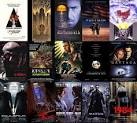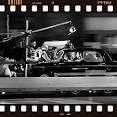
msnblog.msn.com
Once you have decided on amovie, purchase tickets directly from ...
487 × 328 - 25 k - jpg | 
scribblesscriptsandsuc...
Since I primarily review moviesand television series, and seem to open so ...
506 × 320 - 67 k - jpg | 
hiphopdx.com
Movies & TVposted 3 years ago
304 × 304 - 17 k - jpg | 
eyeris.blogspot.com
The World - Too bad it never came here. This movie was SWEEET.
901 × 1340 - 253 k - jpg |

myspace.com
Movies
527 × 600 - 100 k - jpg | 
soa-world.de
... movies; movies in which a very negative future of our world is shown.
650 × 582 - 135 k - jpg | 
jimsmash.blogspot.com
... its time to start celebrating all month long with "HalloweenMovies"!
1600 × 1433 - 441 k - jpg | 
whitegadget.com
Name: harry potter movies pic.jpg Views: 24344 Size: 54.6 KB
367 × 500 - 55 k - jpg |

englishmoviez.co.in
Watch Movie :-Twilight (FullMovie at Online) Title: Twilight (2008)
302 × 450 - 31 k - jpg | 
long-mcquade.com
Alfred Publishing - Harry Potter Instrument Solos: Movies 1-5
600 × 800 - 367 k - jpg | 
cajunradio.com
The highly popular “Movies Under The Stars” is returning back in October of ...
493 × 399 - 24 k - jpg | 
mashable.com
The Movie and Tech Series is supported by DVDVideoSoft.
313 × 313 - 33 k - jpg |

movie-moron.com
summer-2009-movies-angels-and-demons.jpg
275 × 331 - 82 k - jpg | 
top30actionmovies.org
Are you looking for the oldest & latest top 30 action action moviesof our ...
550 × 326 - 216 k - jpg | 
supplemagazine.org
Top Movies of 2010: Redbox Counts Down the Year's Top Rentals
407 × 600 - 73 k - jpg | 
blog.ajchristian.org
I scanned the annual box office numbers for the top 50 to 100movies (using ...
645 × 558 - 164 k - jpg |

timelessmedspautah.com
Next time you're at the moviesand looking for a little something to “snack” ...
336 × 356 - 34 k - jpg | 
sandervanderzon.blogsp...
Watching movies on Youtube?
494 × 308 - 49 k - jpg | 
cnbc.com
Movies of the Boomer Generation
600 × 400 - 60 k - jpg | 
top10list.com
Top 10 Jackie Chan Movies
400 × 279 - 31 k - jpg |
No comments:
Post a Comment